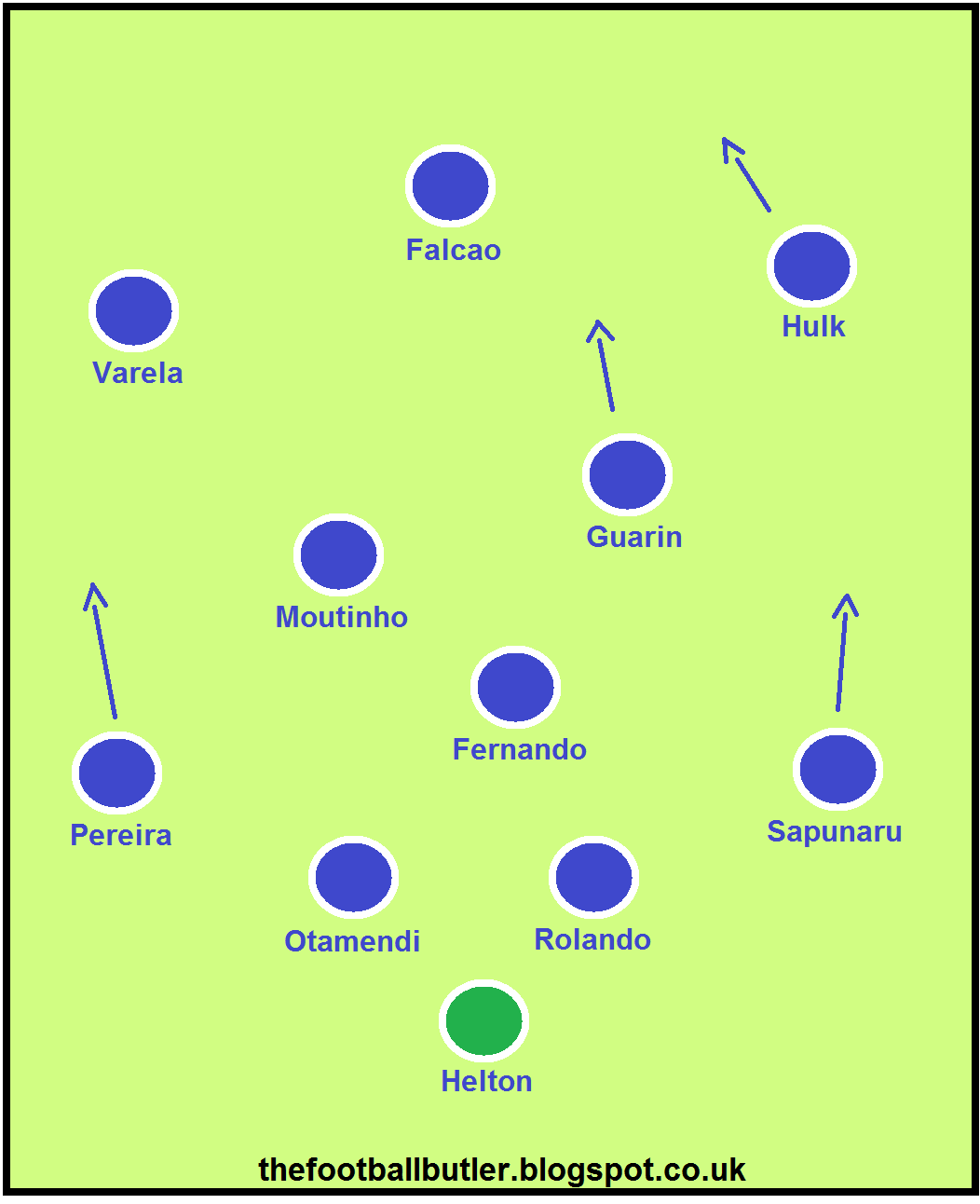Another Brazilian midfielder is heading east to ply his trade in the Premier League, and the tactical implications of Paulinho’s North London arrival could be indicative of a stark change in Andre Villas Boas’ Tottenham Hotspur tactics.
Villas Boas’ time in England has seen him predominately switch between a 4-2-3-1 and a 4-3-3, the former utilized this season at Spurs and the latter used at Chelsea.
His premature sacking from Chelsea and his switch to a 4-2-3-1 this year at Spurs might suggest that his old 4-3-3, most effectively used during his tenure at Porto, was a striking failure. Regardless of how you interpret the reasons for that tactical change, a £17m investment in a defensive midfielder is a huge statement of intent from a team playing in Europe’s second string competition, especially when a number of Spurs fans would have unanimously agreed that Clint Dempsey and Gylfi Sigurdsson’s underwhelming performances might have warranted a substantial investment in the attacking midfield role instead.
Paulinho will now become Spurs’ third high class defensive-minded midfielder, and it seems highly unlikely that if he, Moussa Dembele and Sandro are all fit Villas Boas would omit any of them from his starting XI. With that in mind, it’s not unreasonable to think that a switch to the 4-3-3- as so effectively used at his time at Porto- could be the framework for Spurs’ 2013/14 campaign.
Rewind two years and that Porto team was quite something, full of flair and individual excellence, exceeding all expectations when it claimed 2 domestic cups, an unbeaten season (by a record breaking 20 points) and the Europa league. It would be naive to assume that Villas Boas’ Porto side was just a team of good players- there were many tactical features to that side, a credit to his managerial ability.
 But the tactical highlight of that team was midfield rotation, an uncommon British tactical theme. The system primarily revolved around Porto’s no.6, the excellent Fernando, who tended to bomb forward despite being a pure holding midfielder, switching places with Freddy Guarin who usually had license to get forward, but would drop deep himself if Fernando advanced. With Joao Moutinho fulfilling an archetypal box to box role, Porto’s midfield had incredible variety, with opposition teams completely unable to track forward runs from anyone of those 3 midfield players.
But the tactical highlight of that team was midfield rotation, an uncommon British tactical theme. The system primarily revolved around Porto’s no.6, the excellent Fernando, who tended to bomb forward despite being a pure holding midfielder, switching places with Freddy Guarin who usually had license to get forward, but would drop deep himself if Fernando advanced. With Joao Moutinho fulfilling an archetypal box to box role, Porto’s midfield had incredible variety, with opposition teams completely unable to track forward runs from anyone of those 3 midfield players.
If not playing the 4-2-3-1 is a path to domestic success by that rational, then perhaps Villas Boas’ acquisition of Paulinho could be a masterstroke in elevating to Spurs to Europe’s elite tournament. It’s still early days in this highly active transfer window, but Paulinho’s arrival could be the first major clue of changing tactical trends in the 2013/14 season.
